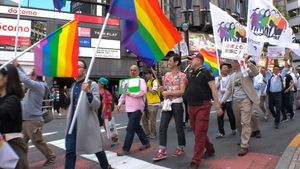OK. First things first: Turkey’s proximity to some more dangerous areas of the world has given it a bad rap. While a move toward a more conservative government has prompted more women to wear head scarves (and even the occasional burka), Istanbul is as modern — and safe — as any other European city. You’ll even find a couple of lesbian bars, but in this Muslim-centric city, gay couples might want to keep PDA to a minimum.
With its many winding roads and lack of street signs, Istanbul might be one of the most difficult cities to navigate — even cabbies pull over to ask for directions. Keep a map with you and don’t be afraid to ask for help — Turkish people will not only give you directions, they’ll happily escort you to where need to go, making small talk along the way.
American travelers do need a visa, but it’s provided at the airport for $20.
Here’s a roundup of what to see, drink and do while in Istanbul.
See:
The Sultanahmet district is the heart of old Istanbul — it’s what you might picture when you think of Turkey, full of mosques, palaces and an assortment of other historical treasures. Fortunately, many highlights are quite close together, which makes for easy sightseeing.
Start in Sultanahmet Square, and first head to the Topkapi Palace — this former Ottoman Empire hub is best explored before the tour-bus crowds move in around 11 a.m. Home to sultans for centuries, you could spend a day exploring each part of this palace, which might be well advised for those who want to their money’s worth (the entrance fee is $7). But if you’re pressed for time (the Circumcision room isn’t as interesting as it sounds), hit up these three main spots.
The Haram, an additional $7 entrance fee, is a cave-like maze and was the home and prison to four centuries of palace concubines. Starting in the mid-1500s, these women fought, killed and manipulated their way up the harem hierarchy in hopes of having the sultan’s son who might make it to the throne — think of it as The Bachelor on steroids. The history may be sordid (murderous eunuchs? Check.), but the architecture is stunning with hundreds of brilliantly tiled chambers fit for a king.
More on next page...
\\\
(continued)
The Imperial Treasury, another must-see just across from the Harem, houses the ridiculous extravagance created for centuries of sultans. Think ruby-encrusted swords and a pearl-covered box full of cut emeralds larger than a quarter.
The final (fourth) court has panoramic views of the Bosphorus, and if you’re hungry, a modern café, complete with terrace seating, is nearby. And if you haven’t toured enough relics, check out the very nearby Archeology Museum for a $3 entrance fee — same kind of antiquities but with better labels.
After touring the palace, check out the Sultanahmet Mosque. Dubbed the Blue Mosque because of its bluish interior, this gem dates back to the early 1600s. Inside, the mosque is all grand domes and arches lined with thousands of handmade ceramic tiles; outside stand six minarets, more than most mosques, something the reigning sultan got some flack for back in the day.
More on next page...
\\\
(continued)
Admission is free and the mosque is open daily from 9 a.m. until dusk. Even if you don’t see the mosque up close, you’ll likely hear it — the call to prayer blasts through the sound system five times daily.
Built in the 500s, the Haghia Sophia has passed through many rulers and religions, making it an interesting compilation of architecture and influences. It was the largest cathedral in the world for about a thousand years; then it was a mosque for the Ottoman Empire; and now a museum. Admission is $7 and the building is open 9 .am. to 5 p.m., except Mondays.
Up next? The Museum of Turkish & Islamic Art. Admittedly, there’s not much modern art here aside from local artists’ works for sale near the lobby, but the dated pieces are worth a trip. Housed in a restored 16th-century palace, the museum is more about manuscripts than fancy paintings, displaying a series of wood and metal works, calligraphy, ancient Korans and Turkish carpets, as well as Turkish ethnographic exhibits including a fully furnished nomads’ tent. Items are presented chronologically and geographically and are well-labeled, a rarity for this region. The museum is open 9 a.m. to 5 p.m., except Mondays, and admission is $7.
Shop:
Prepare to be overwhelmed upon entering The Grand Bazaar — a trading center since 1461, it’s a massive labyrinthine with 60 streets and 5,000 shops selling jewelry, hand-painted ceramics, carpets, embroideries, spices, water pipes and more. As one of the largest covered markets in the world, the bazaar attracts thousands of visitors daily. If you get past the crowds to the center, you’ll find the high-domed hall of the Cevahir Bedesten, where you can browse pricey antiques like furniture, copperware, amber prayer beads, inlaid weapons, mother-of-pearl mirrors, old coins, and silver and gold jewelry. Be prepared to bargain and be bombarded with seemingly every shop owner trying to get you to buy something. The Grand Bazaar is open 9 .am. to 7 p.m., Monday to Saturday.
Although smaller than the Grand Bazaar, the Spice Market (or Egyptian Bazaar) is one of the oldest bazaars in the city and is full of exotics from the East including spices, dried fruits, fragrances and Turkish delight. Again, be prepared to haggle and dodge vendors.
Eat:
Finding a particular restaurant can be a needle-in-a-haystack experience, but these spots are worth the look. The Fes Café, just outside the Grand Bazaar, has a night club vibe with an eclectic selection of sandwiches, salads and pastas (the “meat pockets” are actually delicious yogurt-covered ravioli). And there’s a little shop next door that sells an assortment of natural bath products and Turkish textiles. Khorasani is a new kebab house with sidewalk seating and white tablecloths. The meat kebabs and puffy bread will change your life, plus there’s a selection of vegetarian options. The three-floor Ottoman-inspired Mozaik is like a trip back in time, and it makes for a romantic dinner spot, as does the quaint basement bar.
More on next page...
\\\
(continued)
Scrub:
When in Istanbul, a visit to a Turkish bath is mandatory, and the Cagaloglu Hamam is one of the city’s most famous. The backdrop for ads featuring Kate Moss and others, the hamam is listed in the New York Times bestseller 1,000 Places You Should See Before You Die (something they mention on all of their signs). For $36 you can have a sultan-worthy treatment with a scrub, rub and wash. You can wear a swimsuit, undies or nothing at all. But don’t be shy — the women scrubbing you certainly aren’t. Cagaloglu is cash-only and be sure to tip well.
Sleep:
A bit more expensive than other Sultanahmet hotels (rates start at $190 a night), the Ibrahim Pasha is worth the splurge. This four-floor boutique hotel is stylishly modern (complete with free Wi-Fi) and adorned with old photographs throughout. A buffet breakfast with fresh fruits, veggies, honey, cheeses, olives and more is included, and the views and breeze from the rooftop bar are the perfect city reprieve. The staff is professional and helpful, and they offer a 10 percent discount if you pay by cash or traveler’s check.
Outside the city:
Take the 45-minute ferry to Büyükada Island, the largest and most popular of the Prince Islands in the Sea of Marmara. Here you’ll find a variety of outdoor restaurants and quiet spots to sun beachside, along with many historical buildings, churches, mosques and monasteries dating back to the 6th century. Motorized vehicles are forbidden, so visitors explore the island by foot, bicycle, horse-drawn carriage or donkey. The ferry stop is a short ride from Sultanahmet Square and boats come and go several times a day, check prices and schedules.
At Dalia Beach Club guests can dine at the café or restaurant offering traditional Turkish fare, lounge on the beach or try canoeing, hiking or a game of beach volleyball. They say there’s surfing, but there’s not much in the way of waves. Still, it makes for a nice place to relax outside the city on the Black Sea. The entrance fee is $17 during the week and $29 on weekends. It’s a 45-minute drive from Sultanahmet, but taxi transportation can be easily (and cheaply) arranged at your hotel.
Across the bridge:
A 10-minute cab ride across the Galata Bridge will take you to the more modern Beyoglu or the Pera district. Here, you can spend a day wondering Istiklal Street, a pedestrian mall with many familiar Western shops and several Starbucks, as well as cafes, clubs, wine bars, movie theaters and galleries. The street stretches from Taksim Square to Tunel Square, home to the third-oldest passenger underground in the world. And if you don’t mind heights, take a trip up Galata Tower — for $7 you score a panoramic view of the city and priceless photo ops.
If you’d still like a taste of the old, just off Istiklal Street you’ll find an area of antique shops perfect for finding obscure souvenirs. Check out SeyMel (the first few letters for evil and angel in Turkish), the two-storey shop has dresses and jewelry from as far back as the ’40s and a massive collection of vintage hats, which won’t run you more than $50.
Drink:
Open evenings, Rocinante Café Bar is Beyoglu’s answer to a divey lesbian bar. The drinks are stiff; the bartenders are friendly; and if you come Friday or Saturday night, you’ll find some Turkish pop dancing in the small café. Located on the second storey of beautiful old building, Rocinante also has a veranda where you can drink and watch the busy street below.
Bigudi, Istanbul’s first lesbian-exclusive club, is rumored to have a women-only policy. But I did see a few men on a Saturday night. The lights are low; the music is Euro-pop; and the dancing is dirty. The club is open midnight-ish to 4 a.m., weekends. The later you go, the better.
Stay:
The four-star Marmara Pera, a few blocks from Istiklal Street, features free Wi-Fi, a small rooftop pool (heaven after a day of walking) and Mikla, one of the hottest restaurants around. Rates will run you about $110 a night.
Photo Credit: Michele Fleury
Read more by Jamie here.























































































 Cindy Ord/Getty Images
Cindy Ord/Getty Images

























